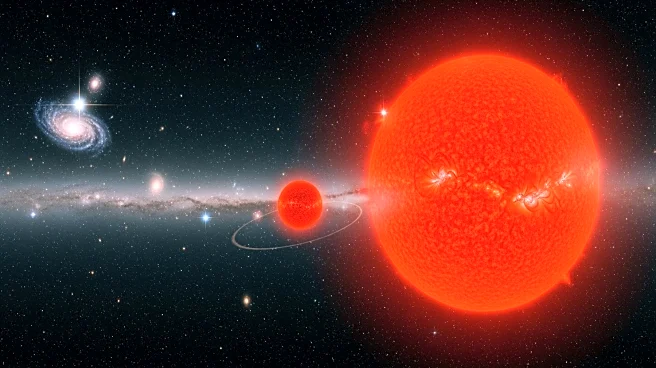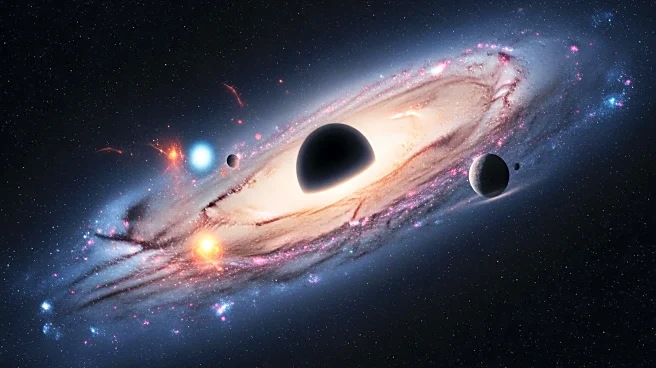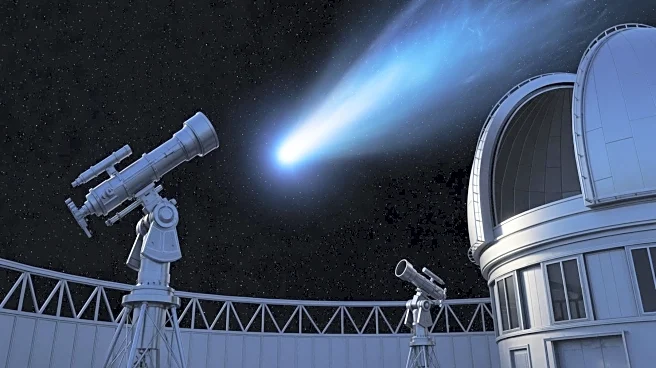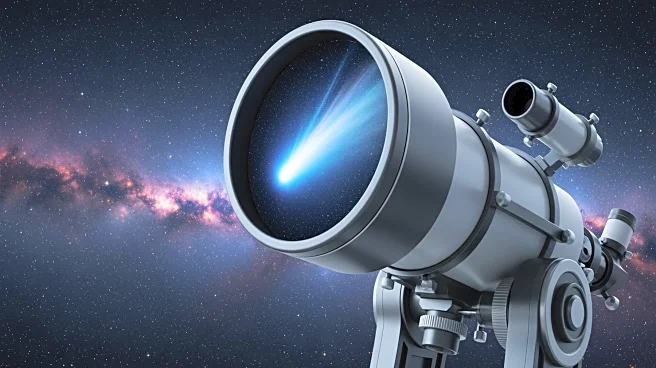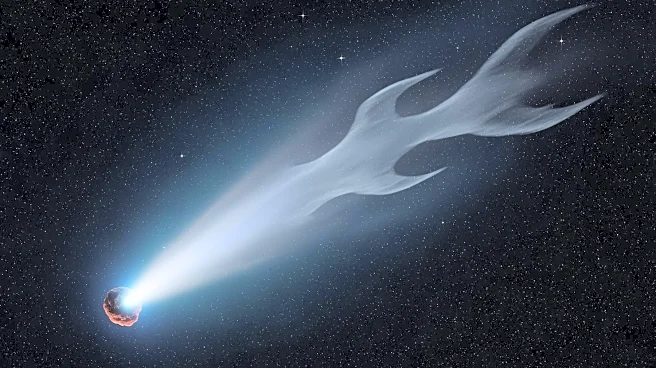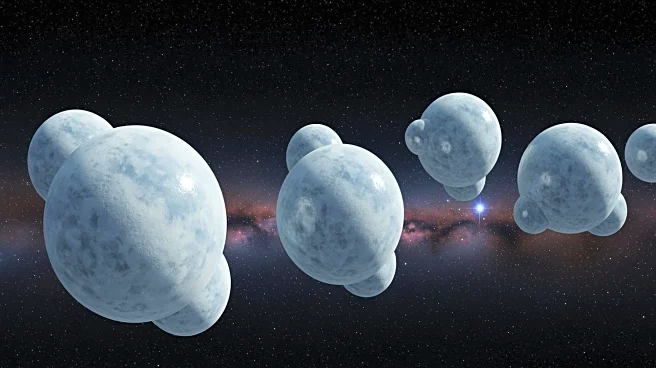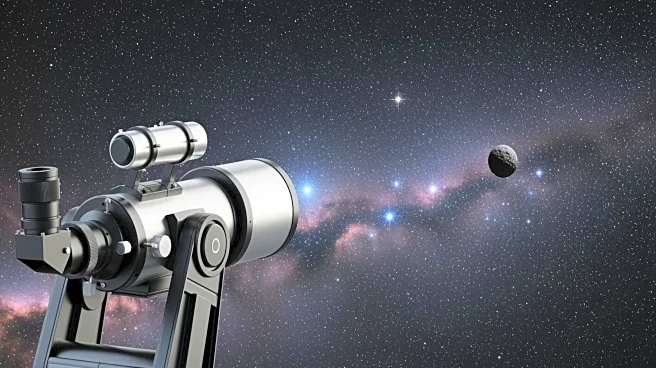What's Happening?
An international team of researchers has discovered three Earth-sized planets in the binary stellar system TOI-2267, located approximately 190 light-years away. This discovery, published in Astronomy &
Astrophysics, reveals a unique planetary arrangement where two planets transit one star, and the third transits its companion star. This marks the first known binary system with transiting planets around both stars. The system's compact nature and the presence of these planets challenge traditional models of planetary formation, which often consider binary systems as hostile environments for planet development.
Why It's Important?
The discovery of these planets in a binary system is significant as it provides a natural laboratory for studying planet formation under extreme conditions. It challenges existing theories about the stability and formation of planets in such environments, potentially leading to new insights into the diversity of planetary systems in the galaxy. This finding also highlights the effectiveness of combining data from space missions like NASA's TESS with ground-based telescopes such as SPECULOOS and TRAPPIST, advancing the field of exoplanetary science.
What's Next?
Future observations with advanced instruments like the James Webb Space Telescope (JWST) and next-generation ground-based telescopes will aim to measure the masses, densities, and atmospheric compositions of these planets. These studies could provide further insights into the conditions necessary for planet formation in binary systems and the potential for habitability in such environments.
Beyond the Headlines
This discovery could lead to a reevaluation of the potential for life in binary systems, traditionally considered less likely to host habitable planets. It also underscores the importance of international collaboration and the integration of various observational techniques in advancing our understanding of the universe.


